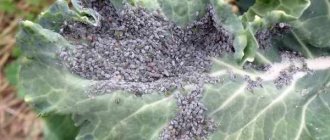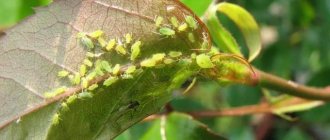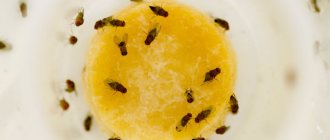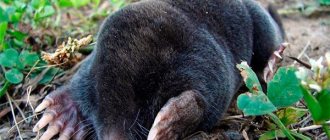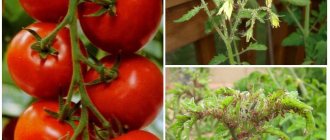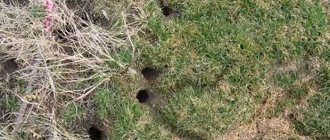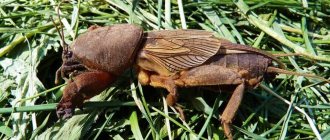Why are aphids dangerous?
There are several species of aphids; by nature, insects have protection from natural enemies and actively reproduce. The pest sucks out the juice and takes away vitality.
As a result of impact on the plant:
- the leaves wrinkle, begin to curl and dry out;
- in the absence of the possibility of full development, young crops are not able to survive in the winter cold;
- the occurrence of deformations that become irreversible is noted;
- productivity declines sharply.
In addition, the insect carries fungal spores on its legs, which begin to multiply and form mucus on the surface of the plant, making breathing and further growth difficult.
The pest has a detrimental effect on any shrubs, fruit trees, and berry crops. Existing methods of combating it include the use of effective chemical treatments or proven traditional medicines.
Use of wood ash
As soon as the cleaning and digging are completed, it is time to use wood ash. This folk remedy is the oldest enemy of aphids known to gardeners.
General Motors Unveils Future Car Concepts and More at CES 2021
Razer has created a mask with voice amplification function
Using a plastic bottle I prepare an original dessert with ice cream: recipe
Aphids do not tolerate wood ash. This remedy works even in cases where modern chemical poisons are powerless. Wood ash should be used to treat everything possible. Tall fruit trees should be fumigated.
Mechanical methods of getting rid of aphids
Using mechanical methods that are safe, cheap and widely available, you can control pest colonies in your garden. Insects are destroyed by first collecting them with your hands or washing them off with water.
If cherry aphids are infested, the upper parts of the shoots are removed, and parts of the plant infested with the pest are sprinkled with bone meal.
A labor-intensive but effective way is to use adhesive tape. Aphids are collected from the plant with a piece of tape (provided that colonies have not yet appeared). This method can only remove insects that have been detected, but it will not be possible to prevent their reappearance.
Timing for treating plants against aphids
The named guest operates in dachas throughout the entire season, from early spring to autumn frosts. Before deciding when you can spray fruit crops, you need to remember that not only chemicals are effective, but also biological products and folk remedies. The first treatment against aphids is carried out at the moment of bud break, the second - during flowering and formation of ovaries, the third - at the beginning of fruiting, the fourth - after harvesting.
Biological products that are developed on the basis of living microorganisms can be used throughout the growing season. This group includes Fitoverm, Lepidotsid, Vostok EM, Fitosporin, Mikosan and others. Almost all biological products not only fight pests, but also help strengthen the immune system of plants.
A set of preparations to help the gardener
Treatment with chemicals is carried out at any time, but at least 2-4 weeks before harvest, and even better before the ovaries appear. Anti-aphid chemicals are appropriate for massive infestations of fruit trees.
Fighting aphids with folk remedies
Gardeners actively use reliable folk remedies to help remove aphids, because in most cases they:
- effective;
- do not cause harm to the external environment;
- do not require quarantine periods before harvesting.
The treatment is carried out in the evening, generously wetting the plants in the affected areas (especially the underside of the leaves).
Some gardeners use flea shampoo to control aphids on cruciferous crops. Dissolve flea preparation (3 tbsp) in water (10 l) and spray on radishes, cabbage, and turnips.
Water
Aphids found on trees can be washed away with a stream of water. She cannot go back on her own (for this she needs ants), so after several treatments you can get rid of the pest (if there are no ants on the site).
Soap solution for aphids
Water (10 l) is poured into the container, grated laundry soap (0.3 kg) is added to it. If you use liquid soap, its amount is reduced by 2 times. The solution is used to spray affected plants.
Instead of laundry soap, you can use washing powder or any dishwashing detergent (at the rate of 4-5 tablespoons of detergent per 1 liter of water).
Soap and soda mixture
Add laundry soap (¼ piece) and soda ash (1 tbsp) to water (1 l). A cloudy day is chosen for processing to prevent the formation of burns on plants.
When using only a soda solution, you need to remember that it is quickly washed off by precipitation, so re-treatment is required.
Aphid solution.
Ash infusion
Water (10 l) is poured into the container, wood ash (300 g) is added, heated to a boil and kept for 30 minutes. You can increase efficiency by adding soap to the resulting solution before processing.
Tobacco infusion
Tobacco leaves (200 g) are poured with water (5 l) and left for several days (3-4 days). Then additional water (5 l) is added to the container, the solution is filtered and used for spraying.
Infusion of zest
Citrus peels (100 g) are poured with warm water and left to infuse for 72 hours. After straining, it is used to treat plants. To enhance the effect, add liquid soap (1 tbsp) to the solution.
Spicy herbal infusions
Aphids cannot tolerate plants that have a pungent taste. Among them:
- garlic;
- horseradish;
- hot peppers.
Place crushed horseradish leaves into a container (1/3 of the volume), and pour boiling water to the top. Leave for 24 hours.
Chop bitter pepper (1-2 pods), pour boiling water over it, and leave for several hours.
Chop the head of garlic and pour boiling water (1 liter). After cooling, add vegetable oil (2 tbsp) or detergent (2 tsp).
You can add water (1 l) to chopped garlic (200 g) and place the mixture in a warm place for 4 days. Then take the infusion (25 g), add water (10 l) and use for processing.
It is recommended to treat berry bushes and fruit trees 30 days before the start of harvesting.
Infusion of tomato or potato tops
Chopped potato tops are placed in a container and filled with boiling water. Leave for 1 day, then add washing powder or grated soap (1 tbsp).
Onion infusion
Finely chop the onion, pour boiling water (1 l), leave for 4 hours. For greater effectiveness, add laundry soap (5 g) to the composition.
Pine infusion
Pour boiling water (4 l) over pine needles (1 kg), leave for a week. Before processing, add 1 part of water to 1 part of the infusion.
Sorrel against aphids
Horse sorrel roots (400 g) are poured with hot water (10 l) and brought to a boil. After this, remove from heat and leave for 3 hours.
Flower infusions
You can effectively fight aphids with the help of dandelion, chamomile, and marigold flowers. Add boiling water (1 l) to chamomile (100 g) and leave for 12 hours. Soap (5 g) is added to the resulting infusion. For spraying, use a liquid prepared from 1 part infusion and 3 parts water.
The roots (200 g) and leaves (400 g) of dandelion are poured with hot water (10 l) and left for about 4 hours. The infusion is used for spraying.
Essential oils
To ethyl alcohol (100 ml) add a little lavender (15 drops), thyme oil (5 drops), tea tree oil (15 drops) and water (½ l). The resulting mixture is sprayed on the affected plants.
How to deal with gray garden aphids
Gray apple aphid, or red gall apple aphid Dysaphis devecta Walk. (syn. Yez-abura devecta Walk, j , is a sucking insect 2-3 mm long. The body of the founding female and the wingless virgin is broadly oval, from dark gray to olive green. The ordinary female is wingless, oval, greenish-brown, covered with a white powdery coating. The male is winged, dark brown with a gray coating. Adult wingless aphids have transverse dark stripes on the back on two or three anterior, more often and on two or three posterior segments of the body.
There are migratory and non-migratory forms. The migratory form develops in the spring on an apple tree, and the winged offspring flies to intermediate plants - horse sorrel, rosemary, buten, where it develops until autumn. In September-October, the aphid flies to the apple tree and gives birth to new offspring of females and males. After fertilization, females lay overwintering eggs in dead scales of the bark of trunks and thick branches. The non-migratory form develops only on the apple tree, forming 4 generations. Females lay overwintering eggs under bark scales. In the spring, when the buds open, the larvae emerge and feed on the juice of the buds and young leaves. Damaged leaves thicken, curl inward, acquire a characteristic cherry-red, or less often pink, color, then dry out and fall off prematurely. In large numbers, aphids also damage fruits, on which red spots form.
Control measures are the same as against green apple aphids. Before you fight garden aphids, you need to know that the most harmful is the non-migratory form, which spreads in patches and damages mature trees.
Plant allies in the fight against aphids
Nettle and herbs (coriander, basil, fennel, etc.) attract birds and insects that feed on aphids to the site.
Repellent plants
There are plants that repel pests with phytoncides, these are:
- marigold;
- chamomile;
- onion;
- lavender;
- pyrethrum, etc.
By planting such plants close to crops that require protection, the appearance of aphids can be prevented.
Lavender is planted to repel aphids.
Plants that attract aphids
Other types of plants, attracting aphids to themselves, thereby protect the crops, diverting attention from them.
- bird cherry;
- viburnum;
- Linden.
Flowers:
- nasturtium;
- mallow;
- poppy;
- cleome, etc.
Chemicals against aphids
To get rid of aphids, no special knowledge is required, since most drugs are equally effective against all types of pests. All work should be carried out wearing protective gloves and a mask. You must follow the instructions strictly, since if the concentration of the drug is exceeded, a burn may appear on the crown. After contact with the treated plant, it is recommended to wash your hands. The effect of chemistry lasts on average 3-4 weeks.
The most effective insecticides:
- Kalash is a new spraying product to which aphids have no immunity. It is based on the potent substance imidacloprid. Available in 10 ml containers and 5-10 liter canisters. It lasts for 3 weeks, is not washed off by rain, and does not evaporate in the sun. It has a low consumption rate and can be used together with fungicides and herbicides.
- Tanker - the action of the insecticide lasts throughout the season. Destroys aphids on fruit plantings, flowers, and vegetable crops. It has a detrimental effect on many pests of fruit plants.
- Spark double effect is a product for comprehensive protection of plantings from invasion by more than 60 species of garden inhabitants. Includes 2 powerful insecticides - permethrin and cypermethrin. The composition includes a special potassium fertilizer to restore damaged areas of plants. Available in tablets weighing 10 g. Recommended for severe infection before bud break.
Instructions for use - Aktara is a popular insecticide against a variety of pests with an active substance called thiamethoxam. The properties of the solution are maintained for 15-30 days, depending on weather conditions. The prepared composition can be used within 48 hours. Available in the form of emulsion, powder, tablets, small granules.
- Actellik gives the best results in warm and humid conditions, although treatment is not recommended at temperatures above +28°C. Do not mix with Bordeaux mixture and other alkaline agents. In case of a massive pest invasion, it is recommended to double the dosage.
Bordeaux liquid for aphids
Bordeaux mixture consists of lime and copper sulfate. The drug often helps gardeners in cases of infection by insects and fungi. Fruit plants are treated with the solution several times:
- The first treatment is before the buds swell.
- The second is a 3% solution at the time of bud opening.
- The third - at the vegetative stage, 1% solution.
A properly prepared solution should have a light blue color, a slightly alkaline pH reaction, and no sediment. It is not recommended to use laundry soap for stickiness, as it will shift the pH value. Frequent use of the product is prohibited so as not to lead to an excess of copper salts in the soil.
Basic composition of 1% solution:
- bucket of water 10 l;
- quicklime - no more than 110 g;
- copper sulfate – 100 g.
Preparation of a 1% solution of Bordeaux mixture
To make a 3% solution, you need to increase the proportions. You will need 300 g of copper sulfate, 450 g of lime and 10 liters of water. In the orchard, a 3% solution is used for rich blue spraying. To determine the reaction of a liquid, use red litmus paper pre-moistened in water. If it turns slightly blue, then everything is done correctly.
Spraying in hot weather or after rain leads to foliage burns.
It is not recommended to mix Bordeaux mixture with any drug.
Instructions for using Bordeaux mixture
Insects and birds are natural enemies of aphids
Once in the garden, aphid-eating insects and birds help control the pest. To attract them, it is recommended to plant parsley, carrots, dill and aromatic herbs on the site.
Insects
Insects that feed on aphids are:
- ladybugs;
- lacewings;
- riders;
- earwigs;
- ground beetles, etc.
Daisies attract the attention of hoverflies, amaranths and nightshades attract the attention of ground beetles, and thickets of ferns attract the lacewing.
Earwigs live in placed pots with shavings and eat aphids. Larvae of lacewings and ladybugs can be purchased in specialized stores.
Birds
Small birds use aphids to feed their chicks, including:
- sparrows;
- tits;
- linnet;
- kings, etc.
To get rid of pests in the garden forever, feeders and birdhouses are hung up to attract birds, and containers filled with water are placed. If birds and insects are attracted, pesticides should not be used on the site.
Preventing aphids in the garden
It is always easier to prevent the appearance of a pest than to wage a tireless fight against multiplying colonies. Strong, healthy plants easily cope with insects, and the pests themselves avoid them.
Use of plants
When planning plantings, experienced gardeners do not forget about plants that repel or attract aphids.
The following are planted near crops susceptible to attack by this insect:
- sagebrush;
- celandine;
- chamomile;
- marigold;
- coriander;
- basil;
- yarrow;
- tansy;
- garlic;
- onion.
You can plant marigolds next to a rose that suffers from periodic attacks from aphids - they will scare away the pest
Plants that attract aphids are planted away from the main plantings in order to distract the pest from cultivated plantings. Aphid bait can be:
- cosmos;
- petunia;
- nasturtium;
- tuberous begonia;
- mallow;
- poppy.
The pest is partial to linden, bird cherry, and viburnum. These plants should grow away from the garden.
Insects and birds feeding on aphids
Natural predators - insects and birds - provide invaluable assistance in preventing the appearance of aphids and controlling the pest. Ladybug larvae and adults, some species of wasps, predatory bugs, earwigs, ichneumon wasps, hoverflies and lacewings eat the malicious pest.
Ladybugs are the most common insect predators
To attract beneficial insects to the garden, you should try to plant every free area with spicy fragrant herbs or nettles. Parsley, coriander, basil, tarragon, planted in tree trunks, will also repel harmful insects with their aroma.
Small birds (sparrows, tits, wrens, linnets, warblers, robins) destroy not only aphids, but also many other harmful insects.
Tits will help clear the garden of aphids without the use of special means.
The gardener's task is to attract volunteer helpers to the garden. This is not difficult to do, just take care of the birds’ access to water, hang birdhouses, and, in winter, feeders.
Using the help of birds and predatory insects in the fight against aphids and other parasites, it is necessary to abandon the use of any insecticides and pesticides.
Preventative work in the garden
In autumn, it is necessary to clear the area of fallen leaves and weeds, and the trees - of diseased branches and undergrowth, in which pests often overwinter. When preparing the garden for winter, it is advisable to whiten the tree trunks - this measure will prevent the laying of aphid eggs and destroy pathogenic fungal spores.
Whitewashing tree trunks and skeletal branches is a necessary preventive measure against aphids
In spring and summer, it is necessary to carry out work to control ants. You should not destroy them completely, as in a rainy summer they can become the only pollinators in the garden. The ground around trees and plants susceptible to aphid infestation should be sprinkled with ash around the perimeter - ants cannot overcome such a barrier. After rain, the procedure should be repeated.
If aphid infestations are regular and very annoying, then in the spring, trees and shrubs are sprayed with insecticides or folk remedies as the buds open. Trunks, branches and soil under the plants also need to be treated.
The sap of plants overfed with nitrogen becomes sweeter, and therefore more attractive to aphids. The introduction of nitrogen in the second half of summer is contraindicated - in addition to the danger of pest appearance, an excess of this element inhibits the ripening of shoots, and in winter they can freeze.
In the summer, when the pest appears, if there is no hope for help from birds and insect predators, the plants are treated with any folk remedy or insecticide.
Proper agricultural technology will help avoid aphid invasion or significantly reduce the damage caused by the pest. Required care includes:
- rejuvenation of berry bushes by removing old and diseased branches;
- proper feeding, which includes, in addition to the usual nitrogen, phosphorus and potassium, other necessary microelements;
- feeding plants with ash - the potassium it contains strengthens the cell walls of shoots and leaves. Aphids cannot bite through a durable leaf blade;
- maintaining optimal soil acidity - plants do not absorb microelements in acidified or alkalized soils;
- replenishment of calcium consumed by plants - on peat and humus soils it is necessary to add fluff during digging, and on sandy and clayey soils - dolomite flour.
What to spray
Ammonia is considered an effective method. It cannot be used in its pure form; before use, ammonia (50 ml) is diluted with water (10 l). Sometimes ash and soap are added to the solution.
Dry weather is chosen for spraying; treatment can be carried out regardless of the stage of plant development. The procedure is repeated regularly at short intervals (about two weeks), since pests move and multiply quickly.
To get rid of insects on peppers, cucumbers, tomatoes:
- Kinmiks (during the growing season, spray with a mixture of 5 g of product and 10 liters of water);
- Fitoverm (1 ampoule dissolved in 10 liters of water);
- Entobacterin (to use it, the temperature must be +30°C).
Chemical insecticides
Insecticides can control aphids, as well as their larvae and eggs. Depending on the mechanism of action on insects, agents can be intestinal, contact, fumigants, or insecticides. The most effective:
- Aktara;
- Inta-Vir;
- Coragen;
- Decis Profi;
- Prestige.
Biological drugs
They are obtained by microbiological synthesis. Not everyone knows that insecticides are more dangerous than chemicals:
- Aktofit - as a result of damage to the nervous system, aphids do not use plant sap for nutrition and die after 48 hours;
- Fitoverm - used for treating indoor plants, as well as crops in the garden and greenhouse;
- Entobacterin – the effect of treatment is observed at temperatures above 30°C;
- Jaguar - designed to protect cereals.
Actofit is used in the fight against aphids.
Prevention
The best prevention against aphids is to treat the soil and seeds before planting with a weak solution of ammonia. Just a couple of drops per half liter of water can prevent the problem. Garden plants should be treated with a biological insecticide at least once at the beginning of the season. There will be no harmful effects, but disaster will be prevented.
The damage that aphids can cause to flowers and plants is enormous, including their complete destruction and the destruction of the crop. In such a situation, fighting it remains the only correct solution, and the sooner all forces and methods are used, the better. The main thing is not to overdo it, so as not to ruin everything yourself.
Description of aphids
Aphids (Aphididae) are insects of the order Hemiptera (Hemiptera) ranging in size from 0.5 to 2 mm. The body is ovoid, soft and easily crushed, the legs are long, but the insects move slowly. There are wingless and winged individuals. The wingless female is oblong-oval in shape, the mouthparts are long, thickened in front. Winged insects have two pairs of wings; they fly and infect other plants. The rapid reproduction of aphids is explained by the fact that a wingless female only needs one fertilization to produce offspring of up to 150 larvae 10-20 times every two weeks.
An adult aphid is a small green or black insect. In mid-summer, some individuals grow wings. Thus, pests move long distances to find new sources of food. Aphids live on buds, stems and the underside of leaves, on the tops of young shoots, giving preference to fattening branches (tops).
Aphids are an exceptionally large group of insects. According to the most conservative estimates, it unites about 4,000 species, of which almost a thousand live in Europe. Every year more and more new species are described.
Reproduction and aerial migration of aphids
Aphids lay eggs, and some species have viviparity. Most aphid species reproduce over several generations using parthenogenesis. A certain generation is born winged and of different sexes. In species that change hosts, this occurs before colonization of a new plant or when the colony grows too quickly and the resulting overcrowding. Winged individuals are able to travel long distances and create new colonies in new places.
According to new research, the birth of winged aphids may also be caused by special aromatic substances that aphids secrete when they are attacked by enemies, such as ladybugs. These warning substances cause great anxiety and increased movement in the colony. This creates an overpopulation effect, which causes rapid production of winged offspring.
Colony of aphids on cabbage. © Ed Cullen
